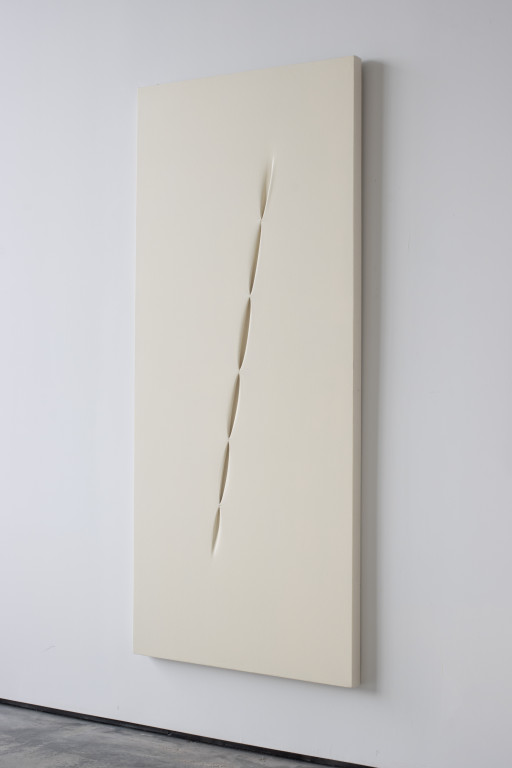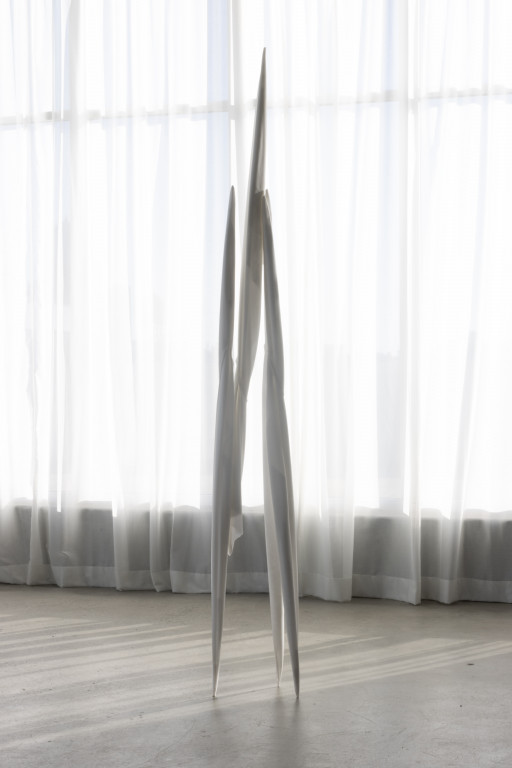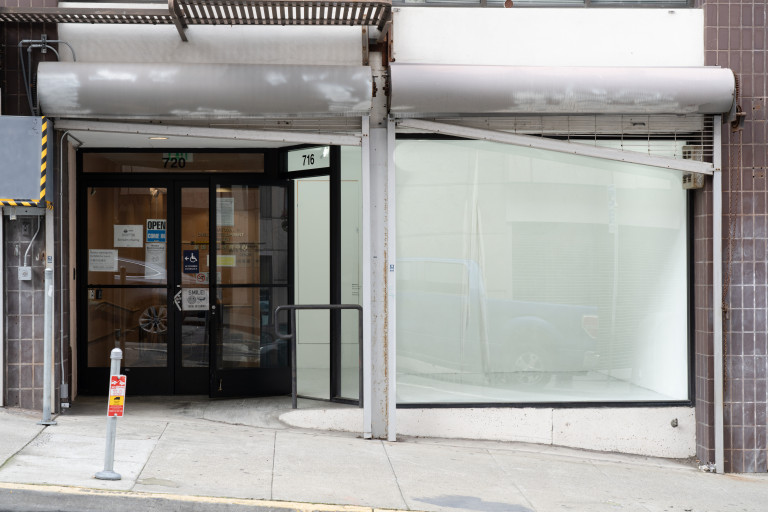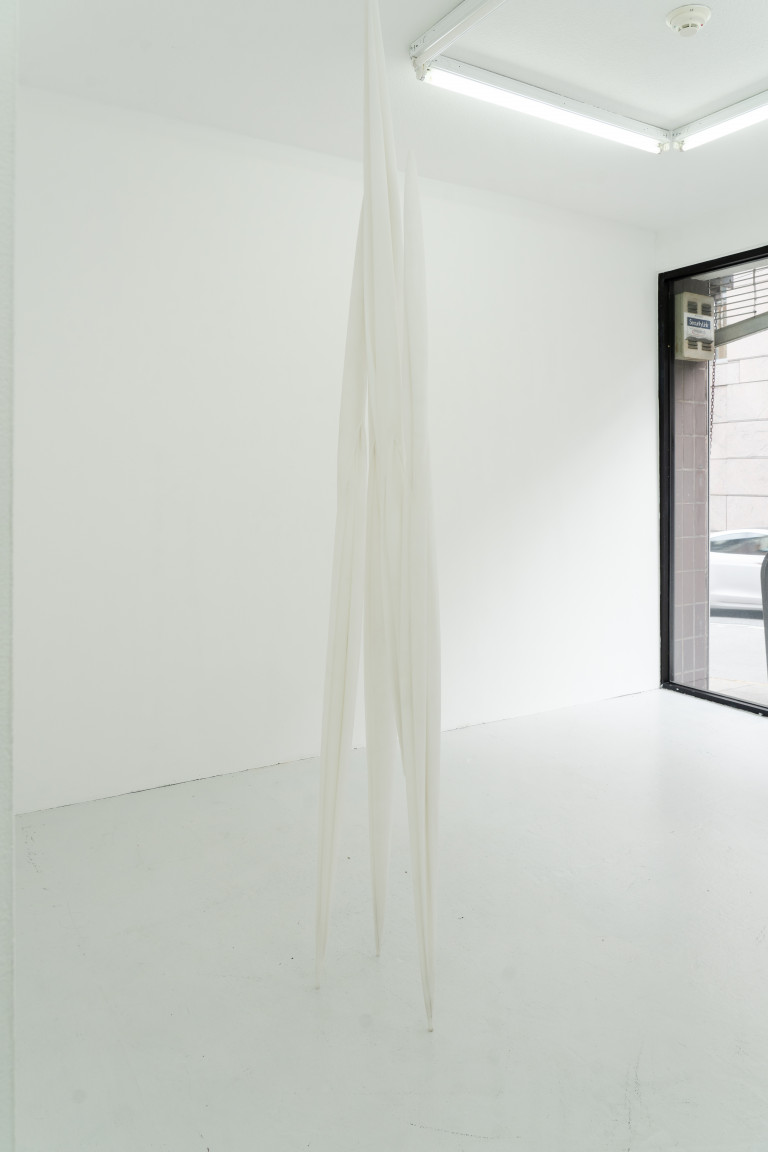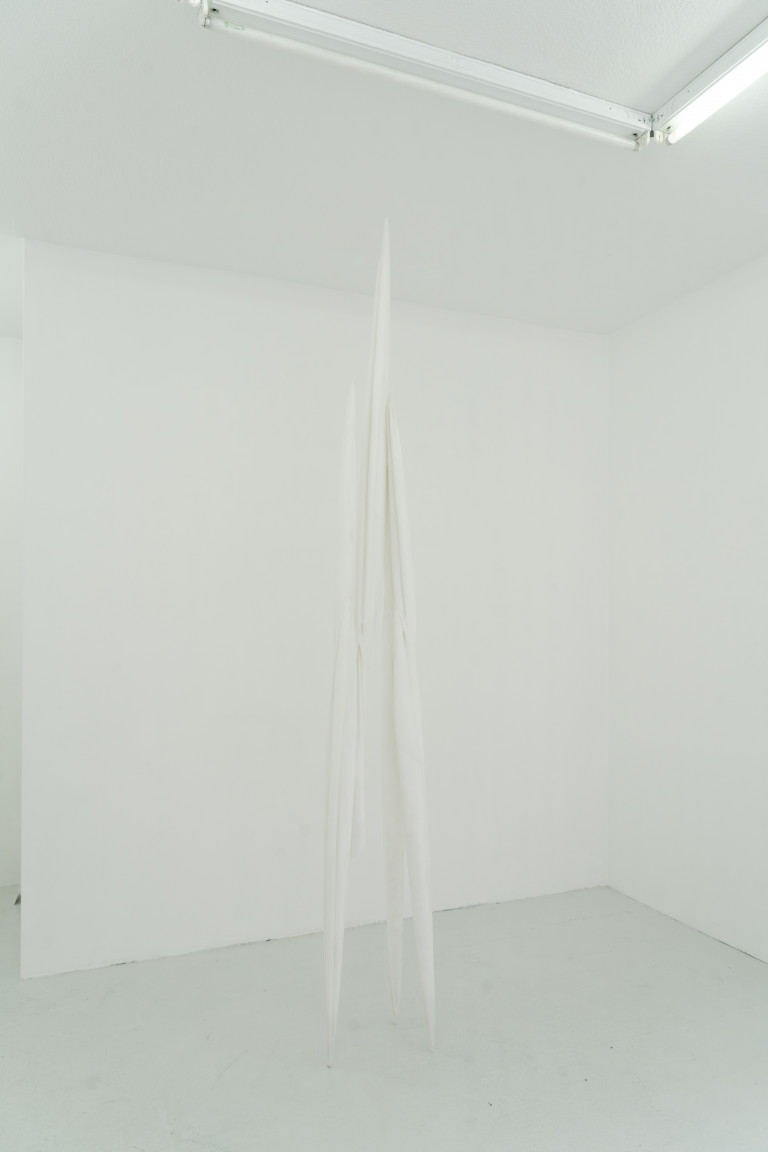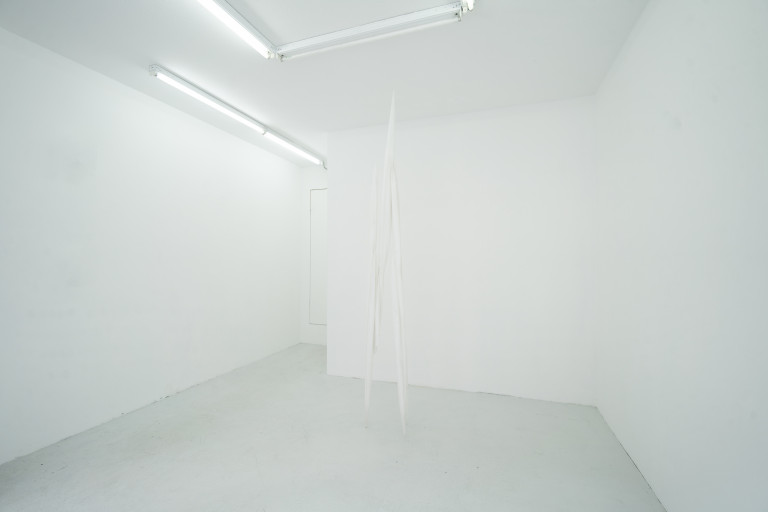Monocarp is a sculpture made of cotton and resin. Monocarpic plants flower and distribute seeds only once before dying. With the same sense of immediacy and transience, Monocarp’s limb-like forms pull into sharp, slender shafts that reach outward from inward seams. Warping expectations of structure and weight, the hard-fixed fibers gently support vertical trunks in a kind of “anti-column,” at once directional and floating. Alluding to interior anatomy, bone-white folds in human scale are experienced more like a sensation than an illusionary material contortion. Not transparent or entirely opaque, folds in the form absorb and transmit light, spiriting fugitive shadow scales.
The wall mounted Gorget adopts its name from a throat adornment used to protect the neck from penetration. Made of flashe, thread, and canvas, the taught surface is pinched and stitched in points of tension to create gashes. Five stitches render six punctures, distorting the surface of an otherwise featureless plane. The repetition of gaps and sutures create a string of small abysses gesturing towards one grand metaphysical boundary.
In tandem, Monocarp and Gorget offer variations on the same force— materializations spawned from void. Like non-orientable vessels akin to a Klein bottle, their surfaces always return to points of origin. Absence and form are one and the same. Concealing while revealing, curvilinear structures part and merge, open and swallow, rounding a rim to reveal inner and outer distinctions as interdependent reflections. Ping’s works gesture towards the boundary between life and death, brushing against the borderlines that makes meaning possible.
